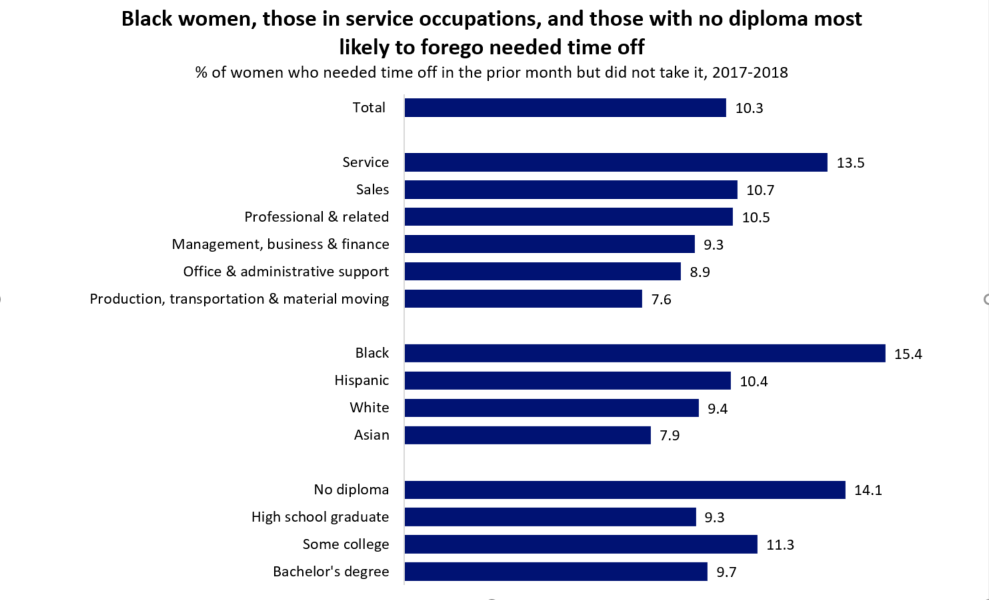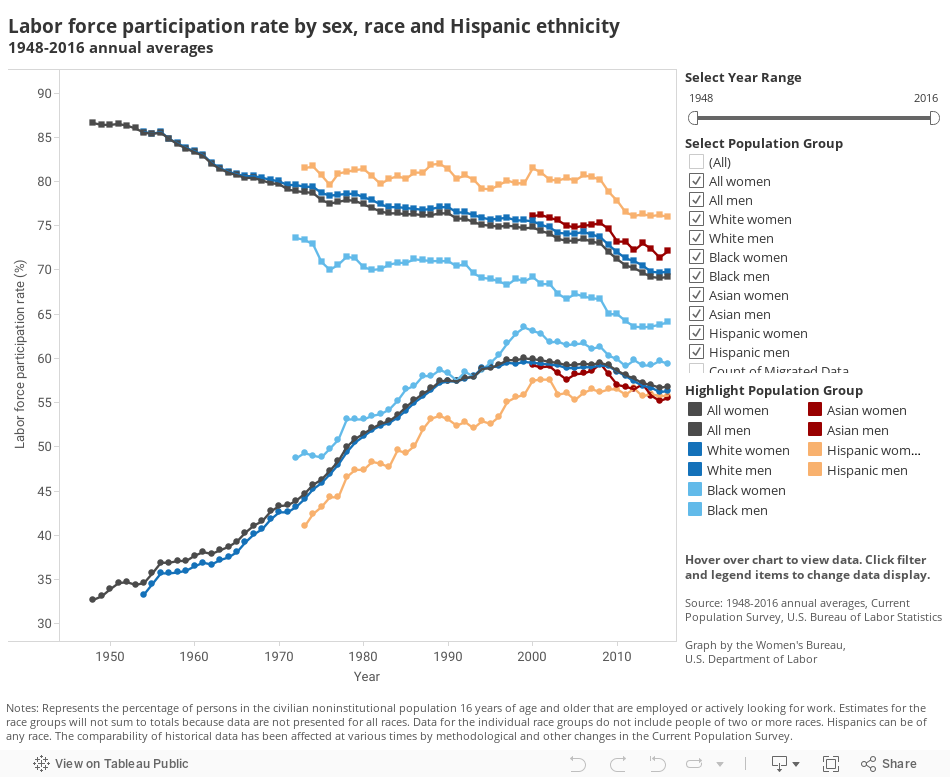"The COVID pandemic has thrown into sharp relief the struggles of working women in the U.S., amplifying the challenges they face as they try to succeed in the labor market while juggling family and personal responsibilities.
Even before COVID, though, many were in the position of needing time off but not being able to take it. Indeed, among all working women in the U.S., 1 in 10 had that exact experience in the prior month, according to the 2017-2018 American Time Use Survey Leave Module, a nationally-representative survey by the Bureau of Labor Statistics sponsored by the Women’s Bureau.

Notes: Based on the main job of employed civilian, non-institutionalized women ages 16 and older. Results not shown for women in Natural resources, construction & maintenance due to insufficient sample size. Hispanics may be of any race. Data: Bureau of Labor Statistics, American Time Use Survey Leave Module 2017-2018. Graphic: U.S. Department of Labor Women's Bureau. (plain text chart)
Women working in service occupations – who were also the least likely to have access to paid leave – were among the most likely to report having needed but not taken leave (13.5%). The shares foregoing leave were also high among African American women (15.4%) and those lacking a high school diploma (14.1%).
On the flip side, women working in production, transportation and material moving, and Asian women were among the least likely to report having needed but not taken leave (7.6% and 7.9% did so, respectively)
Notes: Based on the main job of employed civilian, non-institutionalized women ages 16 and older. Respondents could provide more than one reason. Data: Bureau of Labor Statistics, American Time Use Survey Leave Module 2017-2018. Graphic: U.S. Department of Labor Women's Bureau. (plain text chart)
By far the largest share of all women who needed but didn’t take leave (42%) reported needing to take off for their own illness or medical care. Sizeable shares also reported needing time off for errands or personal needs (26%), or to care for a family member who was ill or had medical needs (20%). Some 8% needed but did not take time off for child care (respondents could report more than one reason for needing time off)..."
Working women
